Binondo: The World’s Oldest Chinatown
Step into Binondo, the world's oldest Chinatown, and embark on a journey through centuries of history, cultural fusion, and culinary delights. From its ancient temples and bustling markets to its legendary food scene, Binondo offers an unforgettable experience.
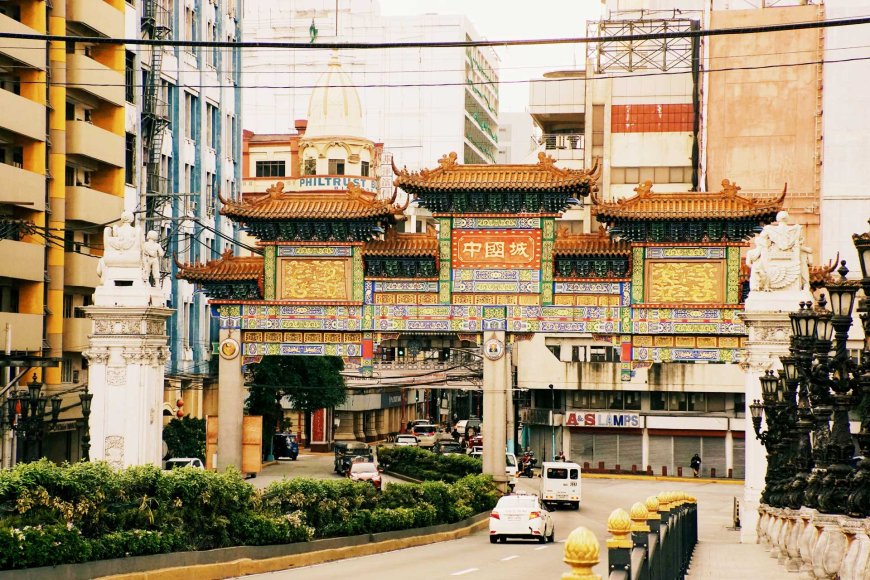
Binondo's Historical Origins
Nestled in the heart of Manila, Binondo holds the esteemed title of the world's oldest Chinatown. Established in 1594 by Spanish Governor Luis Pérez Dasmariñas, Binondo served as a settlement for Chinese immigrants who were predominantly merchants and traders. This strategic move by the Spanish colonial government was intended to foster better relations with the Chinese community while also keeping a closer watch on them. Over the centuries, Binondo evolved from a mere settlement to a bustling economic hub, interweaving Chinese and Filipino cultures that endures to this day.
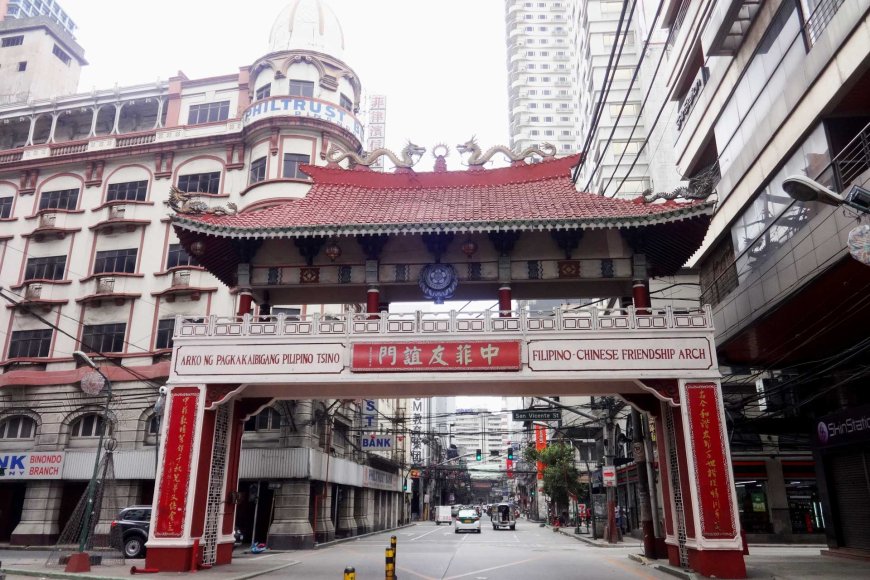 Binondo Chinatown Friendship Arch in Manila Credit: patrickroque01
Binondo Chinatown Friendship Arch in Manila Credit: patrickroque01
The Fusion of Filipino and Chinese Heritage
Binondo is a vibrant testament to the fusion of Filipino and Chinese cultures. Walking through its streets, one can witness a myriad of cultural influences. The Chinese New Year celebrations, marked by dragon dances, fireworks, and traditional Chinese music, highlight Binondo's deep-rooted Chinese heritage. Simultaneously, Filipino festivals such as the Feast of Santo Niño are celebrated with equal fervor, showcasing a harmonious blend of traditions. This cultural amalgamation extends to the culinary landscape as well, with Binondo being famous for its unique fusion cuisine, combining traditional Chinese flavors with Filipino ingredients and cooking techniques.
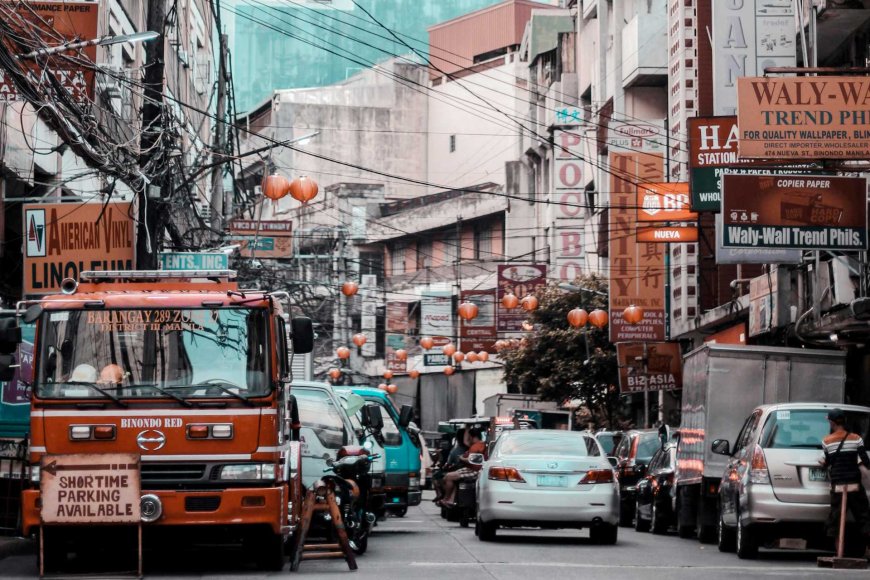
Culinary Adventures in Manila's Chinatown
One cannot talk about Binondo without mentioning its culinary scene. Dubbed the "Food Capital of Manila," Binondo offers a smorgasbord of flavors that cater to all palates. From the savory xiao long bao (soup dumplings) and hearty bowls of beef mami (noodle soup) to the sweet and sticky hopia (mung bean pastry), the food in Binondo reflects its rich cultural heritage. A culinary walking tour through Binondo is a must for any food enthusiast. Notable stops include the legendary Eng Bee Tin, famous for its hopia and tikoy (rice cake), and the historic Café Mezzanine, which supports the local volunteer fire brigade through its profits.
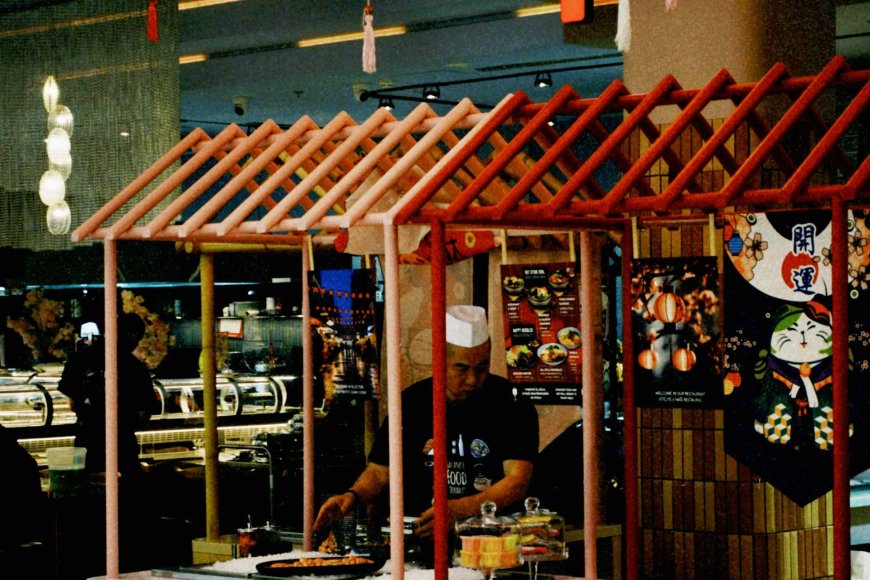
A Blend of Old and New
The architectural landscape of Binondo is a fascinating blend of the old and the new. Historical landmarks such as the Binondo Church, officially known as Minor Basilica of Saint Lorenzo Ruiz, stand as a testament to the area's storied past. Originally built in 1596, the church has undergone several reconstructions due to natural disasters and wars but still retains its Baroque style and intricate details. Modern structures such as the Lucky Chinatown Mall reflect Binondo's ongoing development and its role as a contemporary commercial hub. The juxtaposition of these architectural styles provides a visual narrative of Binondo's evolution through the centuries.
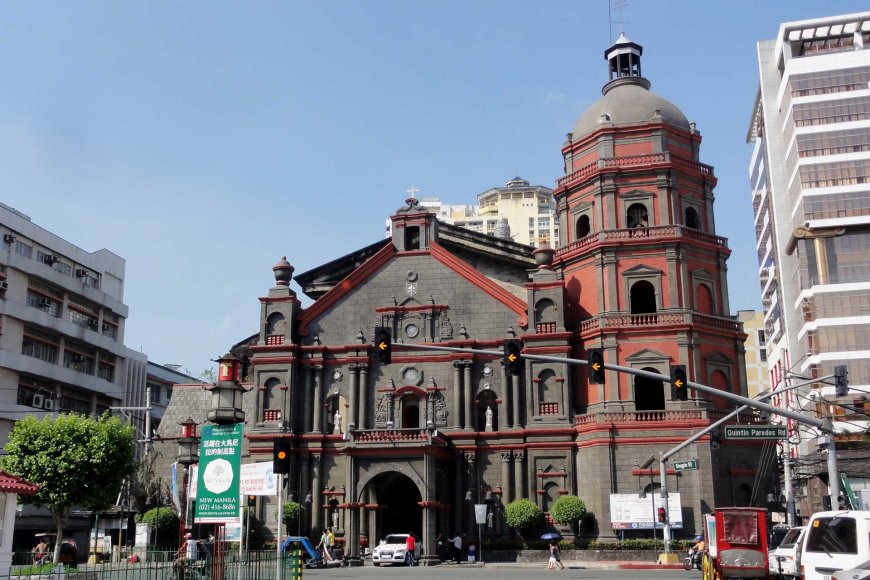 Binondo Church in front of Plaza San Lorenzo Ruiz, Binondo, Manila Credit: Patrick Roque
Binondo Church in front of Plaza San Lorenzo Ruiz, Binondo, Manila Credit: Patrick Roque
Commerce and Trade
Binondo's establishment as a trading hub in the 16th century laid the foundation for its commercial prominence, which continues to thrive today. The district is home to countless businesses ranging from wholesale markets and retail stores to financial institutions. Ongpin Street, the main thoroughfare, is lined with shops selling jewelry, herbal medicine, and a variety of goods that cater to both locals and tourists. Binondo's commercial success is largely attributed to the entrepreneurial spirit of its residents, many of whom are descendants of the early Chinese settlers who migrated to the Philippines.
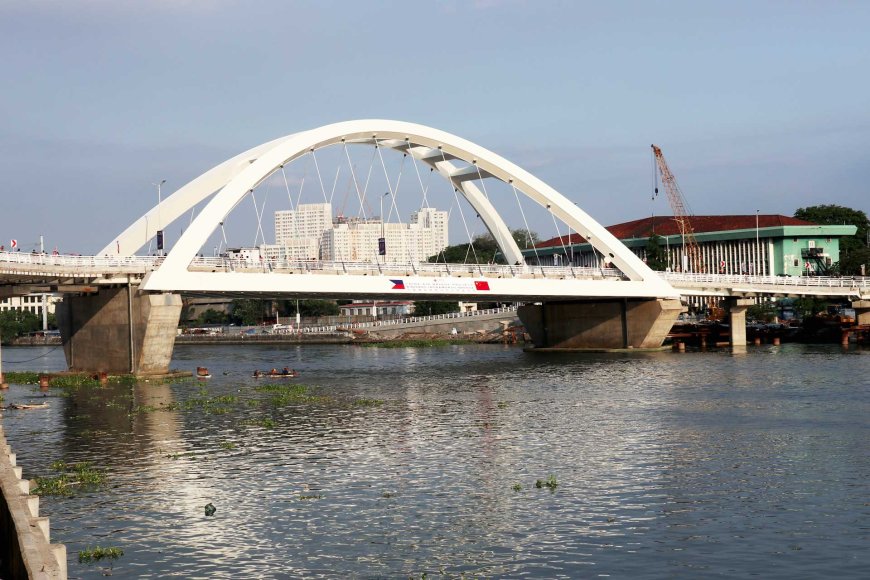 Binondo-Intramuros Bridge in Manila Credit: Patrickroque01
Binondo-Intramuros Bridge in Manila Credit: Patrickroque01
Spiritual Sanctuaries
In addition to the Binondo Church, the district is dotted with various spiritual sanctuaries that reflect its multicultural identity. The Seng Guan Temple, a prominent Buddhist temple, serves as a spiritual center for many of Binondo's residents. Established in the 1940s, the temple is an oasis of tranquility amidst the bustling streets, offering a place for meditation and worship. Other notable religious sites include the Kuang Kong Temple and the Sta. Cruz Church, which cater to different faiths and practices, symbolizing the religious diversity that characterizes Binondo.
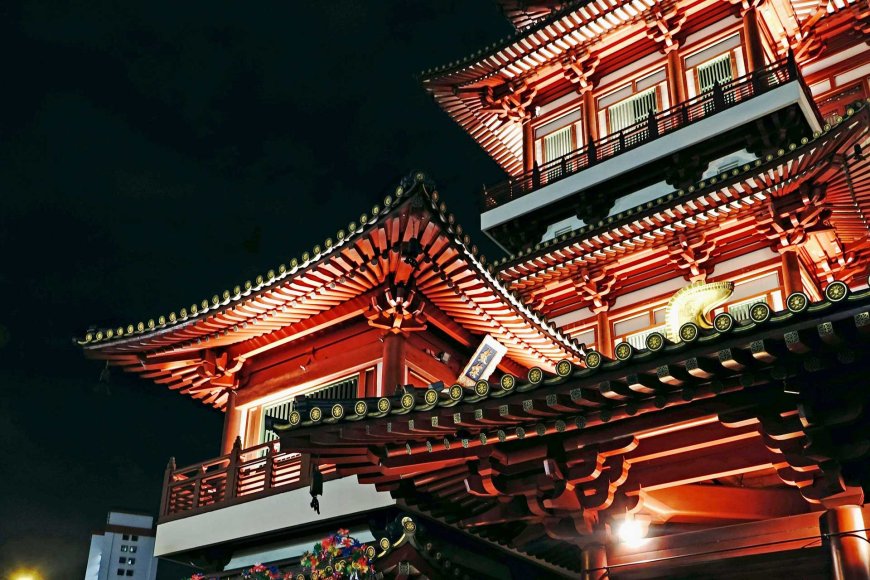
The Jewellery Capital
Ongpin Street in Manila's Binondo district, is renowned as the Jewellery Capital of the Philippines. This bustling thoroughfare is famous for its vibrant array of jewelry shops, goldsmiths, and gem dealers, making it a focal point for those seeking exquisite and finely crafted jewelry pieces. The street is steeped in history, reflecting the rich Chinese-Filipino heritage of the area. Visitors can explore a myriad of stores offering a wide selection of traditional and modern jewelry designs, from intricately designed gold ornaments to precious gemstones, catering to both local customers and international collectors alike. Ongpin Street not only serves as a marketplace for jewelry enthusiasts but also stands as a cultural landmark, embodying the intersection of craftsmanship, tradition, and commerce in the heart of Manila.
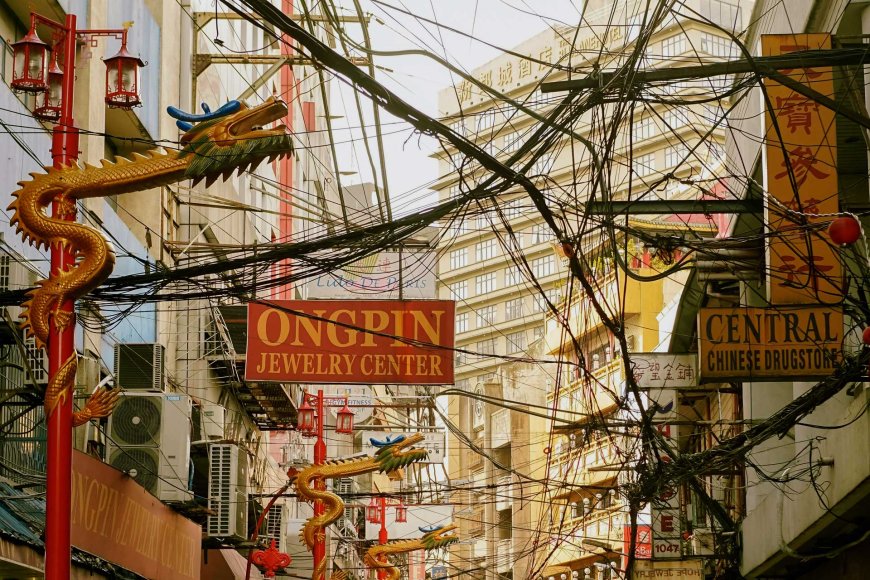
Modern-Day Binondo
Today, Binondo remains a hub of activity, seamlessly blending tradition with modernity. The district continues to attract a steady influx of visitors, both local and international, who come to experience its rich history, vibrant culture, and diverse culinary offerings. Efforts to preserve its historical landmarks and promote cultural tourism are ongoing, ensuring that Binondo's legacy as the world's oldest Chinatown endures for future generations. The bustling streets, filled with the chatter of haggling vendors, the aroma of freshly cooked delicacies, and the sight of traditional festivities, paint a lively picture of a community that proudly celebrates its past while embracing the future.
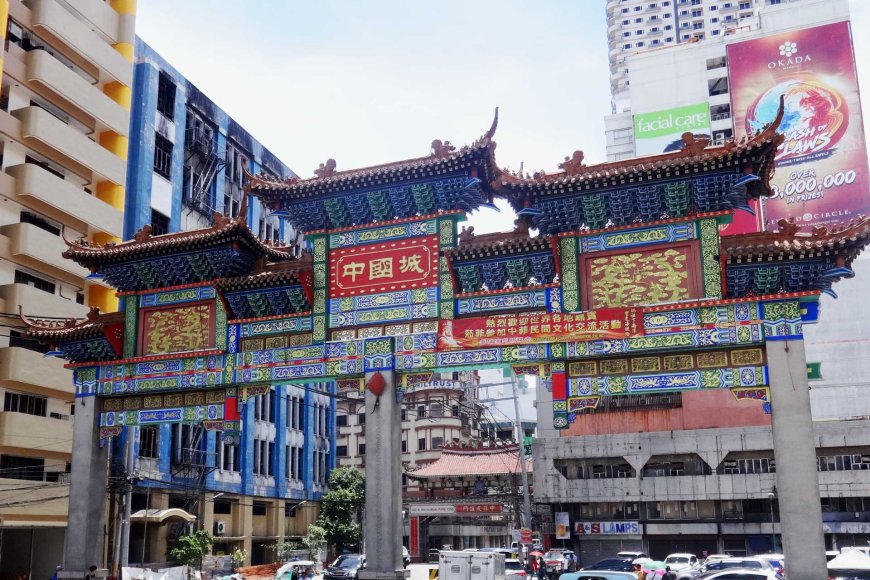 Binondo Chinatown's entrance arch in Manila Credit: patrickroque001
Binondo Chinatown's entrance arch in Manila Credit: patrickroque001
A Living Heritage
Binondo stands as a living heritage site, a place where history, culture, and commerce converge. Its status as the world's oldest Chinatown is not just a title but a testament to the resilience and dynamism of its community. Whether you're a history buff, a culinary explorer, or a cultural enthusiast, Binondo offers a rich and immersive experience that leaves a lasting impression. As you navigate its bustling streets, you'll find that Binondo is more than just a historical landmark; it's a vibrant community that continues to thrive and evolve, embodying the enduring spirit of Manila.
Author's note:
After leaving military school post-high school, I attended FEATI University in Sta. Cruz, Manila near Chinatown. I worked part-time at my uncle's machine shop on Gandara Street in Binondo, where I learned welding and operating cutting machines. I walked daily along Ongpin Street, exploring various Chinese foods in Binondo; my favorite was Chaofan (Chinese fried rice). Binondo has changed over time, but the memories remain vivid.
Find Cheap Flight Tickets to any Destinations in Japan and the Philippines
Nipino.com is committed to providing you with accurate and genuine content. Let us know your opinion by clicking HERE.






























































